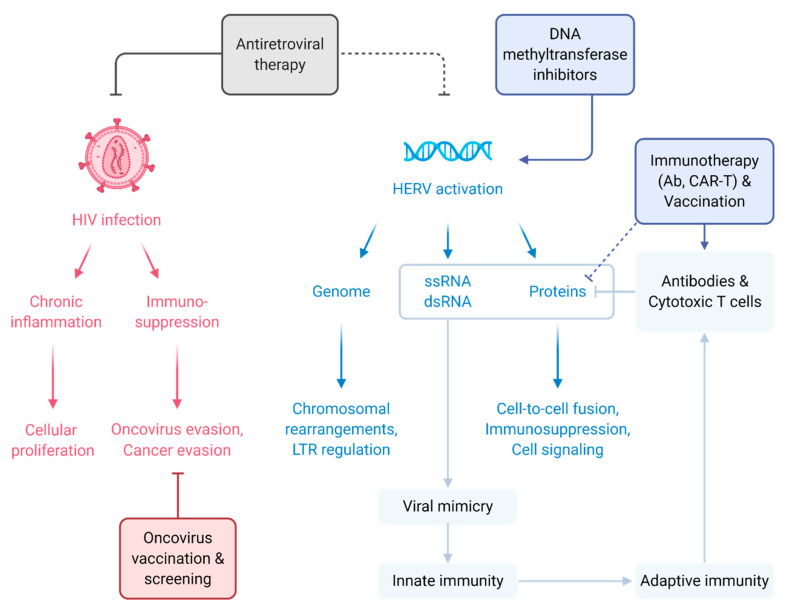Figure 1.
Illustration of the HIV– and HERV–cancer relationships and potential treatment strategies. HIV infection creates a dysregulated environment with chronic inflammation and immunosuppression that aid oncovirus transformation and cancer development (solid red arrows). Strategies to preclude HIV-related cancers include antiretroviral therapies (solid grey T bar) and oncovirus screening/vaccination (solid red T bar). As for HERV, activation and expression of HERV nucleic acid and protein elements have been found in various cancers, potentially contributing to cancer development (solid blue arrows). The aberrant expression of HERV elements has a viral mimicry effect that triggers innate and adaptive immune responses (solid light blue arrows), which have been exploited as approaches to fight HERV-associated cancers (solid light blue T bar). Inducing HERV expression through DNA methyltransferase inhibitors (solid dark blue arrow), immunotherapies targeting HERV proteins (dotted dark blue T bar and solid dark blue arrow), and antiretroviral therapies (dotted grey T bar) are being explored as potential anti-cancer therapies. Figure created with BioRender.com.

